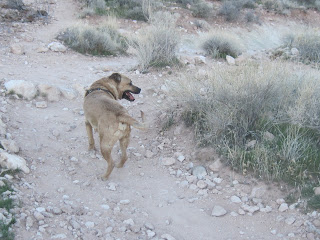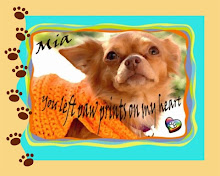By Cathy Scott
A black dog named Cypress walks down the hallway toward a hospital room, wagging his tail, then stops, waiting for the go-ahead.
“Hi, Richard,” says Melanie Meacham, the dog’s person, as she taps on the opened door. “Do you want company today?”
“Yes. Come in, buddy,” the voice of the patient says, speaking directly to Cypress.
With that, Cypress, a lab mix, walks in, stealthy jumps up on the bed and gently lies beside
Richard Steinberg, a writer and novelist, for their long visit.
And so it is through the course of those regular visits that a K-9 therapy dog and a patient have formed a special friendship.
“Do you know what it means to have dogs like Cypress visit?” Steinberg asks. “He and I have a bond. He doesn’t want anything from me, except the occasional treat, which his Mom provides. There’s a trust between us.”
That trust translates to gentle playing between the two, along with hugs, as Cypress spreads out on the bed. Then, Cypress inches closer. “Come here, boy,” Steinberg beckons, and Cypress rests his head on Richard’s chest.
On a book case in Steinberg’s room is a framed photo of his German shepherd, Dolly, who has passed away. “Dogs are like children,” he says. Steinberg, who writes New York Times’ bestselling thrillers, is younger than most of the other patients at the center. But the words are not coming as easily these days, he says, at least on a keyboard, because of several strokes. When it comes to talking about his books, however, he is still quite articulate. And when it comes to Cypress, words aren’t necessary. The two simply gaze at each other like long, lost friends.
Once he leaves Steinberg’s room, 3-year-old Cypress heads down the hallway to see Benjamin Bennett, also a patient, who’s sitting in an armchair, waiting for him. Cypress rests his back against Bennett’s legs while Bennett gives him a neck rub.
“He always remembers me,” Bennett says.
And so it goes each Tuesday and Thursday when Cypress and Meacham stop by Marquis Care, a rehabilitation center, to see patients who need specialized care after an illness or injury. Cypress, who is a certified therapy K-9 with Delta Society Pet Partners, and Meacham are a team.
Besides Marquis Care, they also volunteer for “I Read to Animals” events at libraries through Best Friends’ Education Ambassador program.
To stay in shape between gigs, Cypress, whom Meacham adopted from Best Friends’ sanctuary, regularly takes him to a local dog park. Coincidentally, while there, Cypress and a dog named Ash began playing with each other. When Meacham and Ash’s person, Julie Tuiofea, began chatting, they soon realized that Cypress and Ash are actually brothers, from the same litter, who were born in the Gap, a Native American reservation, and rescued with the mama dog.
Today, the pair are best friends and play nonstop when they meet in the evening at the park.
Cypress, says Meacham, who works for the local police department, “came to me a shy, wimpy, underweight dog. He wouldn't drink from the water bowl without me being there, by his side, and he would cower at just about everything and every word." Still, she says, he wanted to be with her. “He wanted that human touch,” she says. “He just needed a loving and safe home where he could grow and learn to be more confident.”
Cypress made fast strides, with the aid of Meacham’s smaller dog, Charlie, and patience on Melanie’s part.
Today, he’s confident and friendly and enjoys visiting patients. “He really does love everyone,:” Meacham says.
But don’t call it work for Cypress, as Meacham points out. “I noticed he had a sweet approach to everyone he met, that he had a natural way of putting people at ease. I thought Cypress might just make a great candidate for therapy work and maybe a reading program.”
She was right. To her, Cypress represents more than a successful adoption. “He represents the truth that exists when you recognize that all creatures deserve an opportunity to be themselves in a home that accepts them for who they are.”
Even further, she points out, whether he’s at a library being read to by children or at a care center visiting patients, “It is just in Cypress to be with people. If you need him, he needs you. No work is involved.”
Reprinted from Best Friends Animal Society.


























